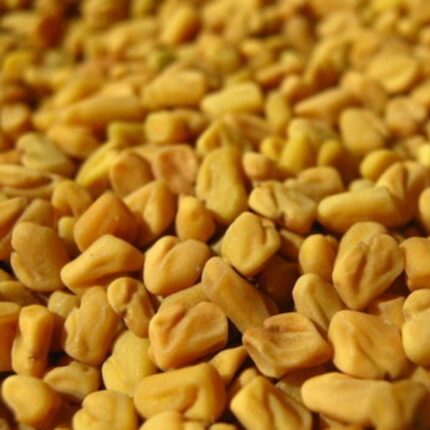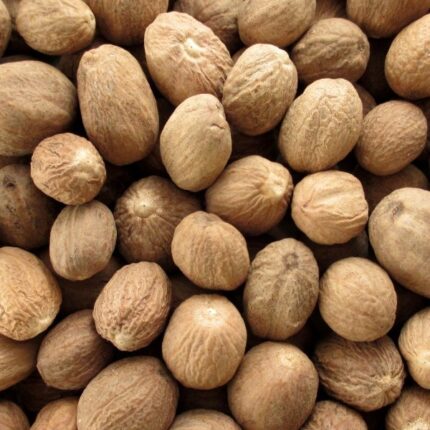Bay leaves are a fragrant leaf from the laurel tree used as an herb. Bay leaves are available whole—either fresh or dried—or ground into a powder. The leaves are added to slow-cooked recipes, such as soups, sauces, and stews, and are removed before serving the dish.
Bay Leaf
Bay leaves are a fragrant leaf from the laurel tree used as an herb. Bay leaves are available whole—either fresh or dried—or ground into a powder. The leaves are added to slow-cooked recipes, such as soups, sauces, and stews, and are removed before serving the dish.
Category: Spices
Related products
Cumin Seed
Cumin is a spice made from the seeds of the Cuminum cyminum plant. Cumin lends its distinctive flavor to chili, tamales and various Indian curries. Its flavor has been described as earthy, nutty, spicy and warm. What’s more, cumin has long been used in traditional medicine. some of the health benefits cumin is traditionally known for, including promoting digestion, reducing food-borne infections, promoting weight loss and improving blood sugar control and cholesterol.
Cinnamon
Cinnamon is a spice that comes from the branches of trees of the Cinnamomum family. As a spice, cinnamon is available in powder form or whole, as pieces of bark. People can also use cinnamon essential oil and supplements. The compounds in cinnamon have antioxidant, anti-inflammatory, antidiabetic, and antimicrobial properties, and that they might offer protection from cancer and cardiovascular disease, among other conditions
Star anise
Star anise is a spice made from the fruit of the Chinese evergreen tree Illicium verum. It’s aptly named for the star-shaped pods from which the spice seeds are harvested and has a flavor that is reminiscent of licorice. Because of similarities in their flavor and names, star anise is often confused with anise, though the two spices are unrelated. Star anise is famed not only for its distinct flavor and culinary applications but also for its medicinal benefits.
Coriander seed
Coriander, popularly known as dhania in India, is extensively used across various regional cuisines to flavour curries, stir fries, snacks etc. Coriander is one of the oldest of herbs and spices. The fruit of the coriander plant contains two seeds which, when dried, are the portions used as the dried spice. when ripe, the seeds are yellowish-brown or tan in colour with longitudinal ridges. Coriander seeds are available throughout the year, in whole or in ground powder form.In Ayurveda, it is often recommended for stomach related ailments, as it is known to ease digestion.
Asafoetida
Asafoetida (Ferula asafoetida) is the dried sap or gum resin obtained from the roots of Ferula plants. It’s commonly dried, ground into a coarse, yellow powder, and used for either culinary or medicinal purposes. Asafoetida is commonly used in Indian cuisine, where it’s referred to as "HING". In Ayurvedic medicine, hing is used to aid digestion and gas, as well as treat bronchitis and kidney stones.
Fenugreek seeds
Fenugreek (Trigonella foenum-graecum) is an herb similar to clover. People use its fresh and dried seeds, leaves, twigs, and roots as a spice, flavoring agent, and supplement. The seeds taste similar to maple syrup and are used in foods and medicine. Fenugreek is native to the Mediterranean, Europe, and Asia. Fenugreek seems to slow sugar absorption in the stomach and stimulate insulin. Both of these effects lower blood sugar in people with diabetes.
Black pepper
Black pepper is one of the most commonly used spices worldwide.It’s made by grinding peppercorns, which are dried berries from the vine Piper nigrum. It has a sharp and mildly spicy flavor that goes well with many dishes. But black pepper is more than just a kitchen staple. It has been deemed the “king of spices”and used in ancient Ayurvedic medicine for thousands of years
Black mustard
Mustard seeds are the small round seeds of various mustard plants. The seeds are usually about 1 to 2 millimetres (0.039 to 0.079 in) in diameter and may be colored from yellowish white to black. Mustard is a multi-faceted botanical with several different varieties. Three variants out of these varieties – namely white mustard (Brassica alba,) black mustard (Brassica nigra), and brown mustard (Brassica juncea), have gained more popularity over others, and are commercially grown and used for their young flower stalks, leaves, and seeds. The seed and oil from the seed are used to make medicine.Black mustard oil is used for the common cold, painful joints and muscles (rheumatism), and arthritis. Black mustard seed is used for causing vomiting, relieving water retention (edema) by increasing urine production, and increasing appetite.











Reviews
There are no reviews yet.